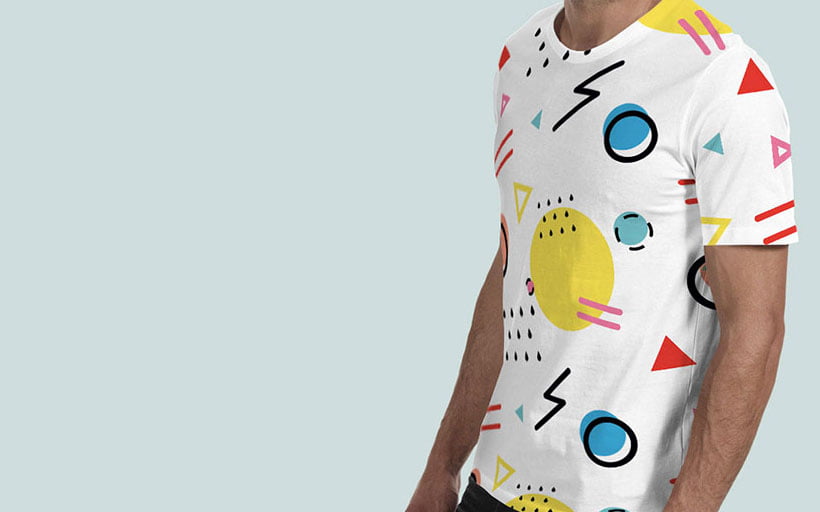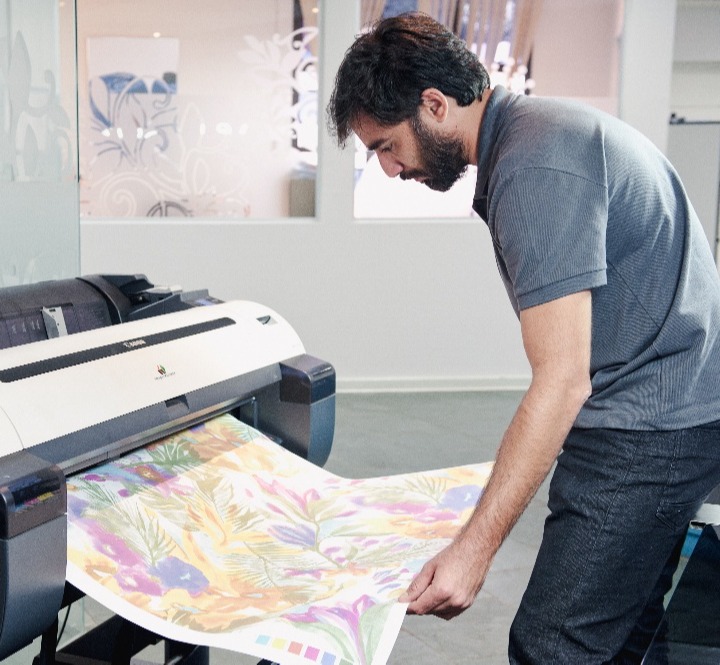Releasing Creative Thinking with Heat Transfer Vinyl Printing for Custom-made Layouts
Releasing Creative Thinking with Heat Transfer Vinyl Printing for Custom-made Layouts
Blog Article
The Increase of DTF Printing: Exploring Its Benefits and Applications
The appearance of Straight to Film (DTF) printing technology is changing the customized apparel sector, supplying noteworthy benefits and a broad array of applications. As the cravings for customized goods proceeds to expand, recognizing how DTF printing can fulfill these developing demands is progressively essential.

Recognizing DTF Printing Technology
Comprehending DTF Printing Modern technology marks a substantial development in the fabric printing industry, especially for its versatility and effectiveness. Direct-to-Film (DTF) printing is an advanced procedure that involves printing styles onto unique transfer films, which are after that transferred onto material making use of heat and stress. Unlike traditional techniques, DTF printing does not require pre-treatment of the material, making it possible for a more streamlined operations.

When treated, the film is placed onto the fabric, and a heat press transfers the layout by applying consistent warmth and stress. This leads to lively, high-grade prints that stick effortlessly to different material types, consisting of cotton, polyester, and blends (screen printing). The modern technology's capability to produce elaborate and vivid layouts with very little configuration makes it a game-changer in the textile printing sector
Trick Benefits of DTF Printing
One of the key benefits of DTF printing is its extraordinary flexibility, which permits high-grade prints on a large range of fabric kinds. This capacity expands beyond traditional cotton to consist of polyester, nylon, leather, and even blended textiles, making it ideal for diverse fabric applications. This versatility decreases the need for multiple printing technologies, improving manufacturing processes and decreasing overall prices.
One more significant advantage is the premium print high quality that DTF technology provides. By employing lively, durable inks and exact application methods, DTF prints keep their color integrity and intensity even after countless laundries. This results in a product that not just looks professional however also stands the test of time, supplying regular value to both end-users and manufacturers.
Moreover, DTF printing offers a streamlined workflow, which can lead to enhanced efficiency and performance. Unlike traditional techniques such as screen printing, DTF does not need complicated arrangement or extensive drying times. This ease of use makes it an appealing choice for services of all dimensions, enabling for quicker turn-around times and the capability to manage little to big manufacturing runs with very little headache.
Applications in Personalized Garments
In the realm of customized apparel, DTF printing stands out as a game-changing modern technology that makes it possible for developers and producers to create bespoke clothes with unequaled detail and top quality. Direct-to-film (DTF) printing has actually reinvented the custom garments market by offering adaptability in style, vivid shade reproduction, and durability. This cutting-edge method enables complex designs to be moved onto a broad selection of materials without compromising the stability of the material.
One considerable application of DTF printing is in producing customized tees, hoodies, and sportswear. The capacity to print intricate graphics with fine information and slopes makes it ideal for tailored clothes, such as group uniforms and promotional product. Furthermore, DTF printing is especially useful for one-off pieces and limited-run orders, supplying a efficient and affordable remedy contrasted to conventional display printing methods.
Additionally, DTF printing has opened up brand-new methods for fashion designers to try out special patterns and appearances, enabling the development of cutting-edge, progressive collections. This modern technology additionally supports small services and independent musicians by reducing the obstacles to entrance in the personalized apparel market. Ultimately, DTF printing is reshaping the landscape of customized clothing, merging creative expression with technical improvement.
Flexibility Across Different Materials
Structure on the developments in customized garments, DTF printing's adaptability across different materials further boosts its charm. Unlike typical printing techniques, DTF (Direct-to-Film) printing can be applied to an extensive variety of substrates, consisting of cotton, polyester, blends, leather, and also hard surface areas like wood and glass.
The capacity to print on varied materials opens many possibilities for services across various industries. In the advertising items industry, business can personalize a broad array of products, from tote bags and caps to mugs and phone situations, all with the very same printing technology. In the apparel industry, DTF printing enables designers to explore complex patterns and vibrant shades on unconventional textiles, pushing the limits of creativity.
Additionally, DTF printing's compatibility with different products additionally translates to cost-efficiency and lowered waste, as manufacturers can make use of the exact same equipment for multiple applications. This flexibility not just broadens the extent of item offerings however likewise improves functional effectiveness.
Future Leads of DTF Printing
As the market progresses, the future prospects of DTF printing are poised to reinvent different markets with continual advancement and technical developments. The rise popular for tailored garments and promotional products is driving the requirement for extra effective, functional, and cost-efficient printing methods. DTF printing, with its ability to produce top quality, durable prints on a vast array of products, stands at the center of this makeover.
Arising trends indicate that DTF printing will significantly incorporate with automation and AI innovations, enhancing manufacturing rate and decreasing labor costs. Advanced software program options will further maximize style accuracy, shade matching, and print uniformity, dealing with some of the existing restrictions. Additionally, eco-friendly inks and recyclable transfer movies are expected to gain grip, aligning with international sustainability goals.
As research study and growth efforts proceed to expand, the extent of DTF printing will likely broaden, opening up new opportunities for innovative and commercial applications. In recap, the future visit the site of DTF printing is brilliant, encouraging significant innovations and broader sector adoption.
Final Thought

Recognizing DTF Printing Modern technology notes a significant innovation in the fabric printing sector, specifically for its convenience and performance. Direct-to-Film (DTF) printing is address a cutting-edge process that includes printing styles onto unique transfer movies, which are after that moved onto fabric utilizing warmth and pressure. DTF printing is especially advantageous for one-off items and limited-run orders, supplying a effective and cost-effective service contrasted to standard screen printing approaches.
Unlike conventional printing methods, DTF (Direct-to-Film) printing can be used to a comprehensive range of substratums, including cotton, polyester, blends, natural leather, and even tough surfaces like timber and glass.DTF printing technology is revolutionizing the custom-made apparel market by site link offering efficient, economical, and versatile options for producing lively layouts on different textiles without pre-treatment.
Report this page